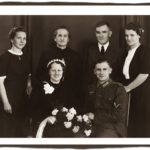We'd love to have you access this content. It's in our members-only area, but you're in luck: becoming a member is easy and it's free.
Already a Member?
Not a Member Yet?
As you organize your photos for your albums, you notice gaps in what you photographed. You remember events that you didn’t even photograph at all– perhaps you weren’t there or perhaps you were too busy to take photos.
Notice Gaps In Your Collection of Photos?
As you organize your photos for your albums, you notice gaps in what you photographed–in other words, the photos you don’t have. You remember events that you didn’t even photograph at all– perhaps you weren’t there or perhaps you were too busy to take photos.
You can ask around to find if anyone took photos you might have copies of. And what if no one has photos to record a time or a person in your life that you simply must memorialize? What to do? [Free Membership required to read more. See below. ]
 What would happen to the memoir conversation if…
What would happen to the memoir conversation if…
- …you took a moment to present this informative post to your friends and family by linking this article on your social media? Just a click. It’s so easy.
- …you reposted this article on your own blog or website? It’s free and you’d both have some valuable content to boost your blog’s reputation and you would be providing your readers with valuable guidance. For the best procedure on how to do this, click here.
- …you subscribed to our YouTube channel?


No comments yet.